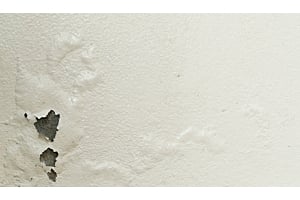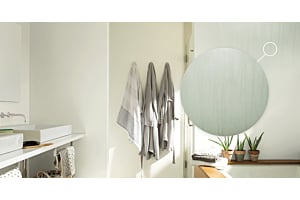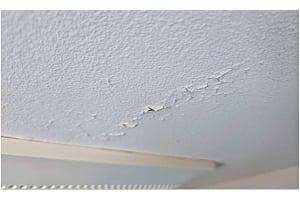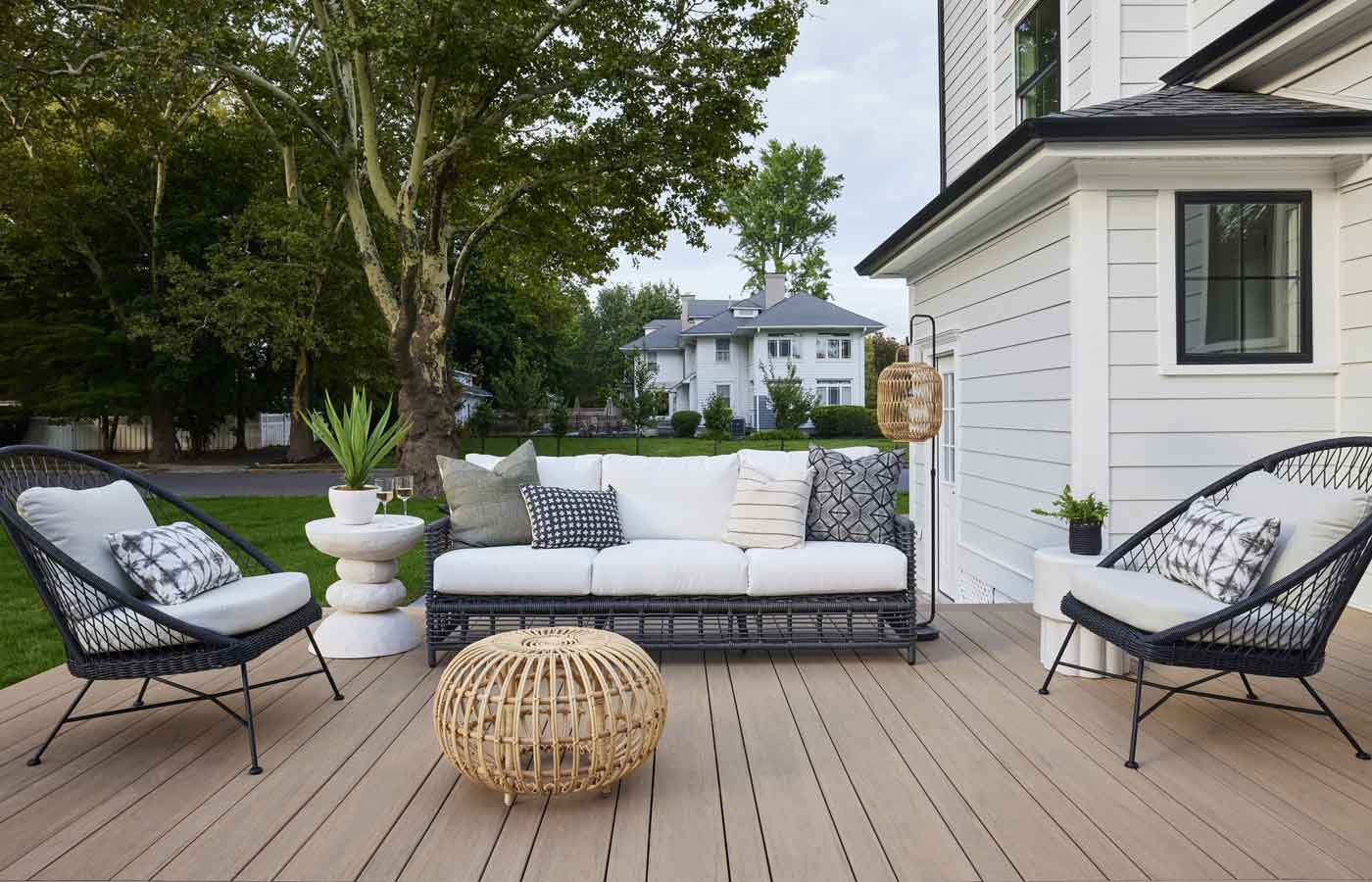
Whether you are about to install a brand new deck or planning how to care for your current space, every homeowner needs to know best practices for DIY deck maintenance. The labor and time required to maintain your deck will depend on where you live and the type of deck you have, but every deck needs both routine and annual care. It’s worth the effort to know your deck will stay a safe, beautiful outdoor living space for years to come!
Deck Surface Cleaning
Keeping your deck free from moisture and debris isn’t just about aesthetics – it’s a key part of maintaining structural integrity and maximizing your deck’s lifespan. Even low-maintenance materials such as composite or PVC decking require regular cleaning to perform their best.
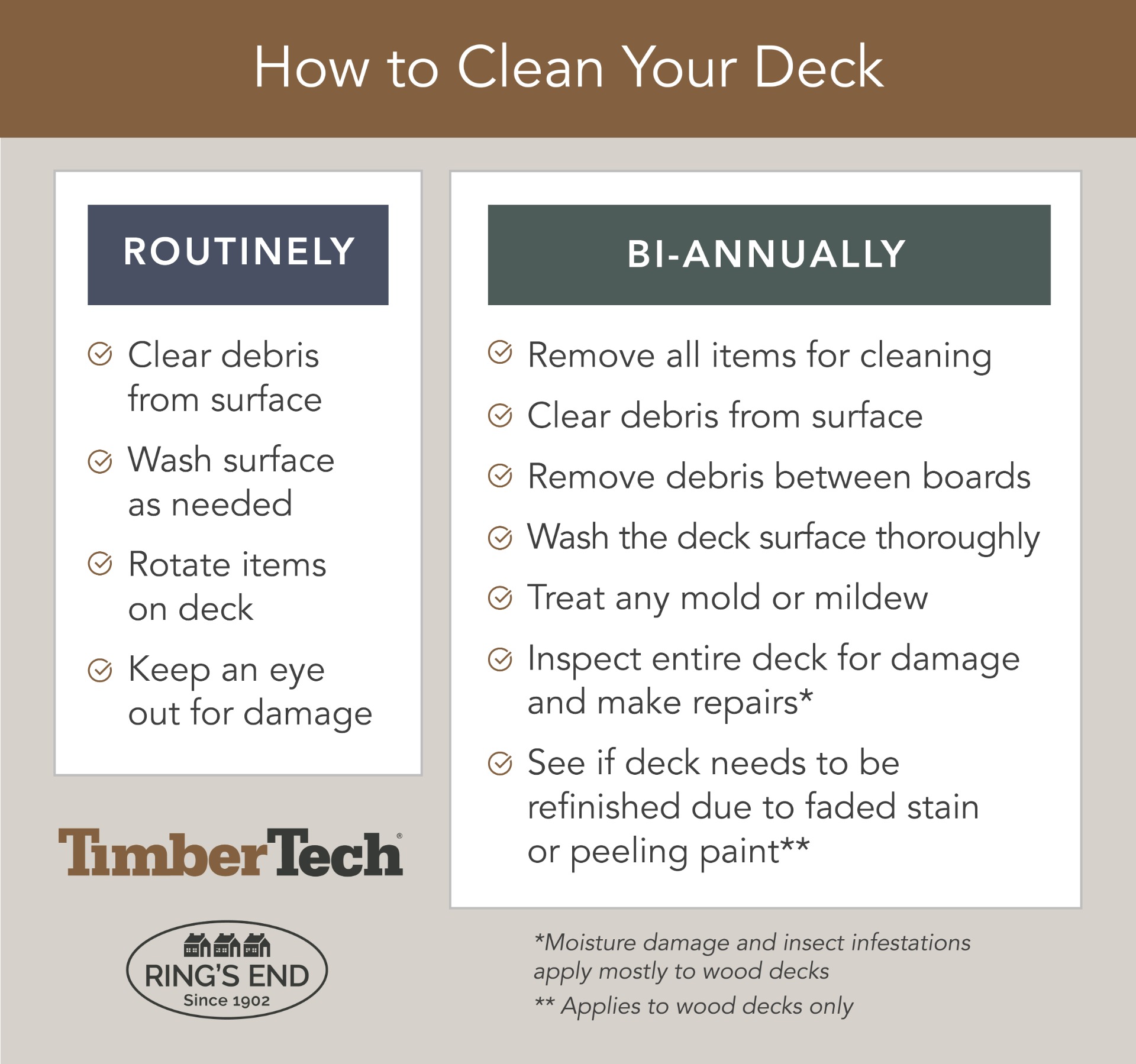
Routine Cleaning
Decks should be swept and cleared of debris (such as leaves) on a weekly basis. Adjust the time frame based on the season and how frequently your deck comes into contact with wet or dirty materials. Leaving anything that collects dirt and moisture on the surface of your deck for long periods of time will allow mold and mildew to grow – especially on wood decks. And remember to rotate where you place outdoor objects such as deck furniture, grills, or door mats, both to accommodate cleaning and to avoid uneven fading.
Bi-Annual Cleaning
We recommend removing all items from the surface of your deck and thoroughly cleaning it twice per year. Spring and fall are typically the perfect times of year for deck maintenance, providing temperate working conditions and the opportunity to restore and prepare your deck between harsher seasons.
If your deck has experienced very little wear and tear over the previous months, you may be able to clean it with a scrub brush dipped in soapy water, and rinse it off with a garden hose. Just remember to remove any debris caught between the deck boards to avoid mold or rot. A Painter's Multi-tool is a great tool to have on hand for this part of the cleaning process.
Cleaning Wood Decks
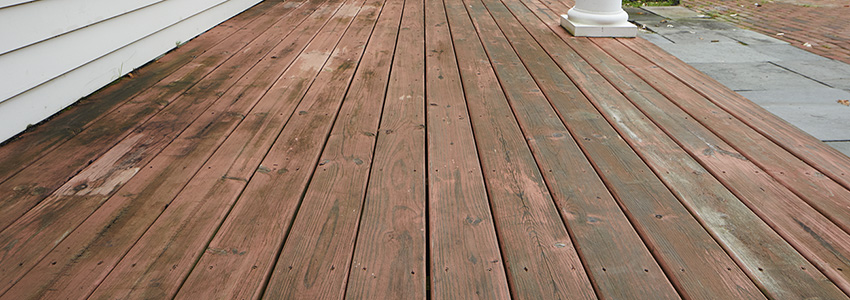
To clean a severely weathered wood deck that has significant mold and discoloration, you’ll need heavier duty cleaning solutions. Benjamin Moore Woodluxe Cleaner, Brightener, and Restorer are three quality wood cleaning products to choose from depending on the severity of grime buildup. If you rent a pressure washer as well, be sure to use it on a low PSI setting to avoid damaging the wood fibers.
Cleaning Engineered Decks
Engineered decking made of PVC or capped composite materials is easier to clean than wood, since it is manufactured for moisture and mold resistance. Pressure washing is also a better option for engineered decks, as the surface doesn’t have fragile wood fibers. However, still be careful to not go above 1,500 PSI to avoid damaging your composite deck.

If soap and water aren’t strong enough to remove old stains, apply a cleaning solution like 30-Second Cleaner, approved for use on your specific deck material. Always remember to stay away from chlorine bleach! Instead, follow manufacturer guidelines and choose a deck cleaner that removes grime without causing damage.
For example, high-quality TimberTech composite decking has a corresponding TimberTech Deck Cleaner specially formulated to thoroughly clean deck boards and railings without compromising the product warranty.
Damage Inspection & Repair
Inspecting your deck for damage should be an ongoing habit – but take extra time to look for issues during your scheduled thorough cleanings. Loose nails, fasteners, and boards are major problems to address, as they can let in unwanted moisture and compromise the safety of your deck – especially if it is high off the ground. Severely damaged boards may need to be replaced entirely. Moisture rot and insect infestations are two other safety concerns that will damage the structural integrity of your outdoor living space if left unchecked.

Wood Deck Refinishing
Wood is a naturally absorbent material, which means you need to take extra precautions to prevent moisture damage by regularly refinishing the deck. How often to re-apply the color and seal on your wooden deck will depend on the type of finish and how much wear and tear your deck experiences.
Painted decks usually retain their color longer than stained decks, but they eventually chip and peel after being exposed to moisture and sunlight. Refinishing a painted deck will require applying a paint stripper and sanding. You may need to prime after that depending on your topcoat or the conditional of the wood after your prep. Deck stains fade more quickly than paint, requiring additional coats every 1-6 years depending on the opacity of the stain. However, stains act as their stain & sealer and don’t flake in the same way that paint does.
Deck Maintenance Variables
Adapt your maintenance plan based on the materials your deck is made of, as well as its climate and location. Maintenance requirements vary drastically between wood decks and fabricated materials, and a deck’s environment will determine what natural damages it will be most likely to experience.
Climate
Decks that are regularly exposed to rain, snow, salt water and other types of inclement weather are more likely to suffer moisture damage and may require more frequent cleaning and inspection. And if you live in an environment that experiences wide temperature ranges, be aware that deck boards (especially wood deck boards) can expand and contract according to weather fluctuations which may cause cracking or warping over time.
Location
Moisture affects any home fixture exposed to the outdoors – but decks that are low to the ground, close to woods, or near bodies of water will experience higher moisture levels than normal, and may be more prone to insect infestations. If your deck is east or west-facing – or just exposed to direct sunlight on a regular basis – know that UV rays will fade their color more quickly than decks in shaded areas. Be sure to factor in your deck’s location when selecting deck materials or planning for long-term maintenance.
Materials
Ultimately, the biggest variable that determines deck maintenance is the material of the deck itself. Wood decks are valued for their natural beauty, but will always be more prone to moisture damage and wear and tear than fabricated materials.
 TimberTech PVC Decking in Weathered Teak, Vintage Collection
TimberTech PVC Decking in Weathered Teak, Vintage Collection
High-quality composite and PVC deck boards are engineered to perform well with minimal upkeep. The only regular maintenance homeowners have to worry about is cleaning the deck surface and inspecting for damages. Plus, top tier decking products such as Azek’s TimberTech decking are designed to replicate a wood grain as closely as possible for the best of both worlds.



